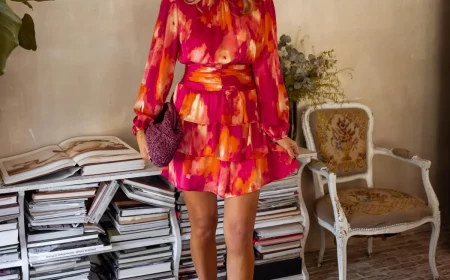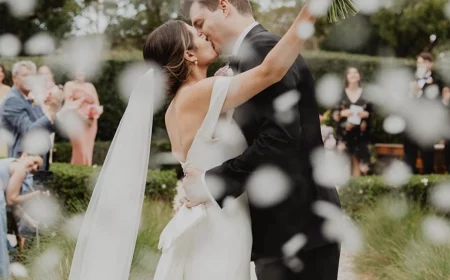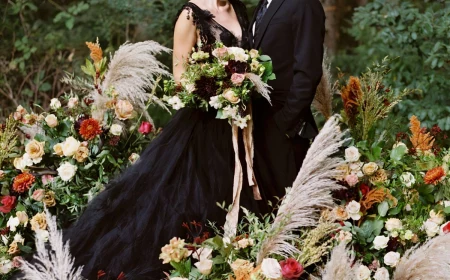The Honest Truth About Naked Wedding Cakes (From a Baker Who’s Seen It All)
I’ve been a professional baker for a long, long time, and I can still picture the first couple who walked into my shop asking for a “naked cake.” This was way before they were all over Pinterest. They were just tired of that thick, sugary fondant everyone peels off anyway. They wanted something real and rustic. Honestly, I was intrigued. It felt like getting back to what really matters: a delicious cake with great filling, with absolutely nothing to hide behind.
In this article
- So, What’s the Big Deal with Naked Cakes?
- Naked vs. Semi-Naked: Which Is Right for You?
- How the Pros Build a Flawless Naked Cake
- So, Can I Just DIY My Naked Cake?
- Let’s Talk Money: The Naked Cake Cost Myth
- A Crucial Chat About Flowers and Food Safety
- Is a Naked Cake Right For Your Wedding?
- Galerie d’inspiration
Fast forward to today, and I’ve made hundreds of these beauties. They can be an absolute showstopper at a wedding, but let me tell you, their simplicity is incredibly deceiving. There’s no room for error. Every crumb, every layer, and every dollop of filling is on full display. They require a level of precision that most people don’t see at first glance.
So, this is the frank conversation I have with every couple who’s considering one. We’re going to talk about how they’re built, why they’re so fragile, and how to make sure yours is a showstopper for all the right reasons. This isn’t about chasing trends; it’s about understanding the craft.
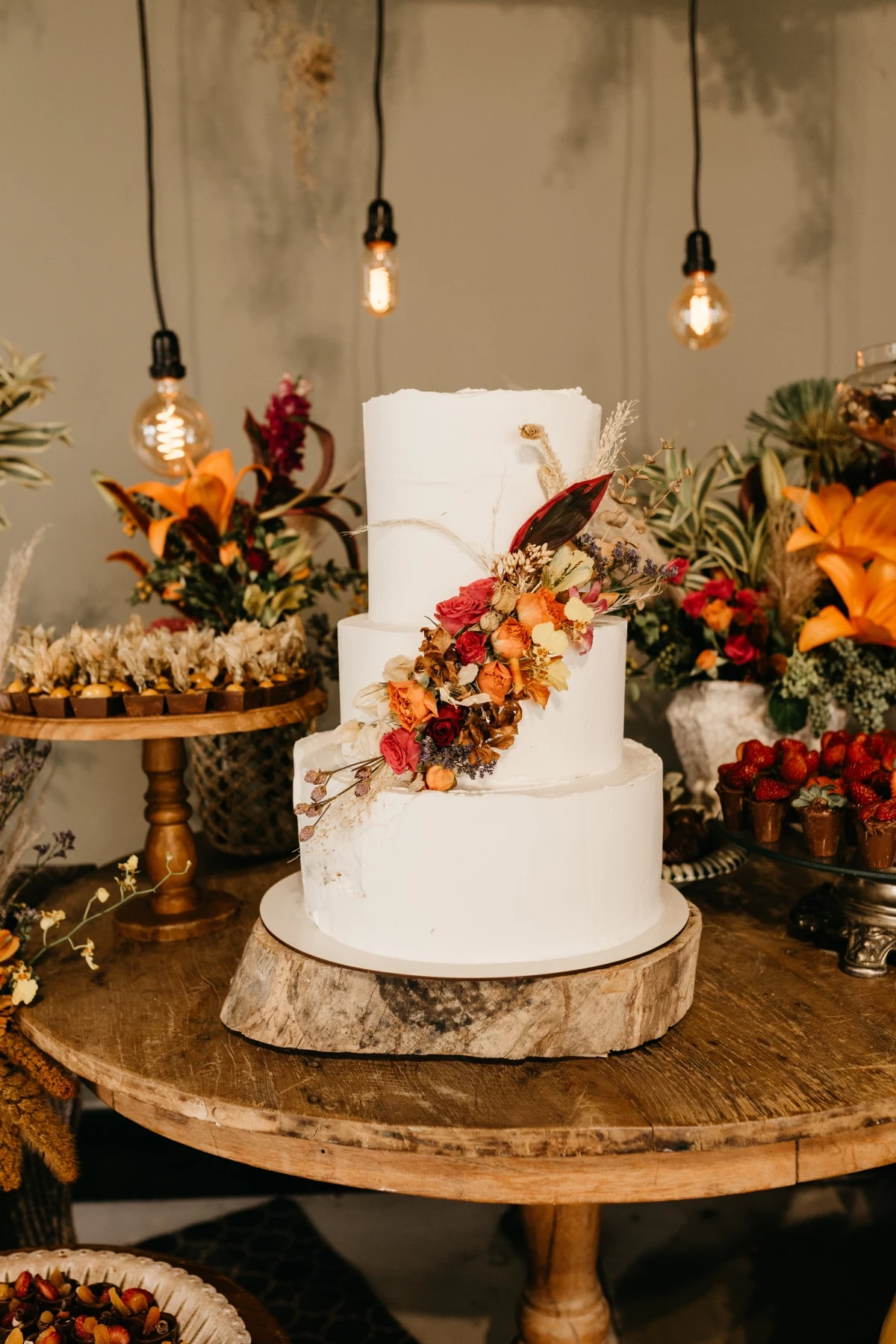
So, What’s the Big Deal with Naked Cakes?
To really get it, you need to know a little bit about cake science. A traditional wedding cake is sealed in buttercream or fondant, which acts like a protective shell, locking in moisture. Without that coating, a cake starts to go stale much faster as air pulls moisture from the crumb, leaving it dry and hard.
A naked cake is completely exposed, fighting a constant battle with the air around it. Humidity is its other big enemy. I once delivered a cake to a stunning barn venue in the middle of a hot, humid summer. Within an hour, the delicate decorations started to wilt and the cake began to look… sad. We had to rush it to a cooler spot. This is why timing is absolutely everything.
And then there’s the structure. Frosting on a regular cake is like mortar holding bricks together. A naked cake has none of that, so it relies entirely on its internal supports (we’ll get to that) and the sturdiness of the cake itself. Any weakness is immediately obvious.
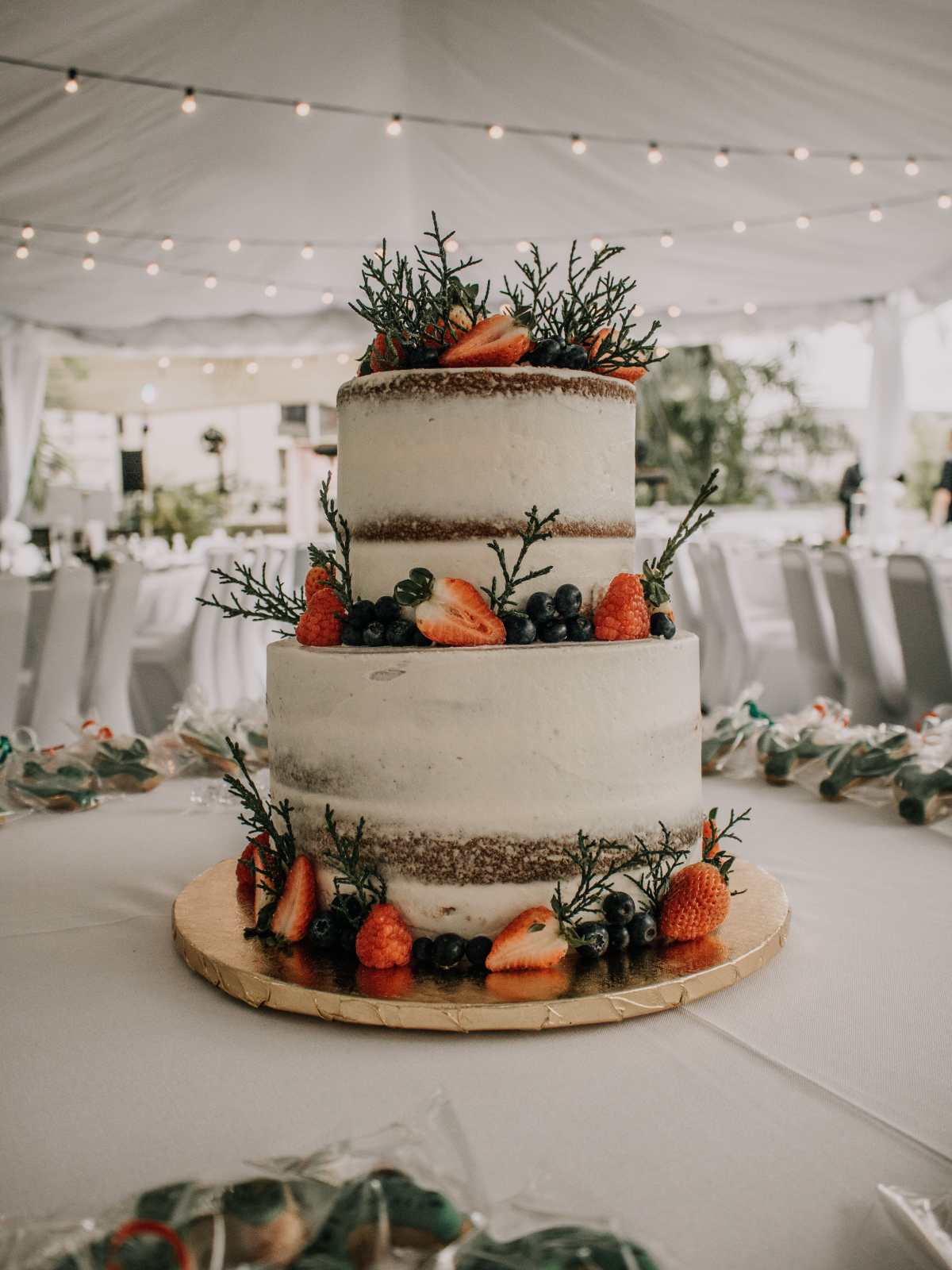
Naked vs. Semi-Naked: Which Is Right for You?
When people say “naked cake,” they usually mean one of two things. Knowing the difference is key, because they behave very differently.
A fully naked cake has zero frosting on the outside. You see the pure, unadulterated cake layers and the filling between them. It’s a very raw, rustic look. But heads up: this style is the most likely to dry out and offers no forgiveness for a slightly crooked layer or a tear in the cake. It really needs to be assembled on-site and served within a few hours.
Then you have the semi-naked (or ‘scraped’) cake. This is the style I almost always recommend to my clients. The baker applies a very thin layer of buttercream and then scrapes most of it off, leaving a sheer coating that just hints at the layers underneath. That tiny bit of frosting makes a huge difference! It helps seal in moisture, adds a little structural support, and gives decorations something to stick to. It’s the perfect compromise, giving you that rustic vibe with way more stability and a longer display time.
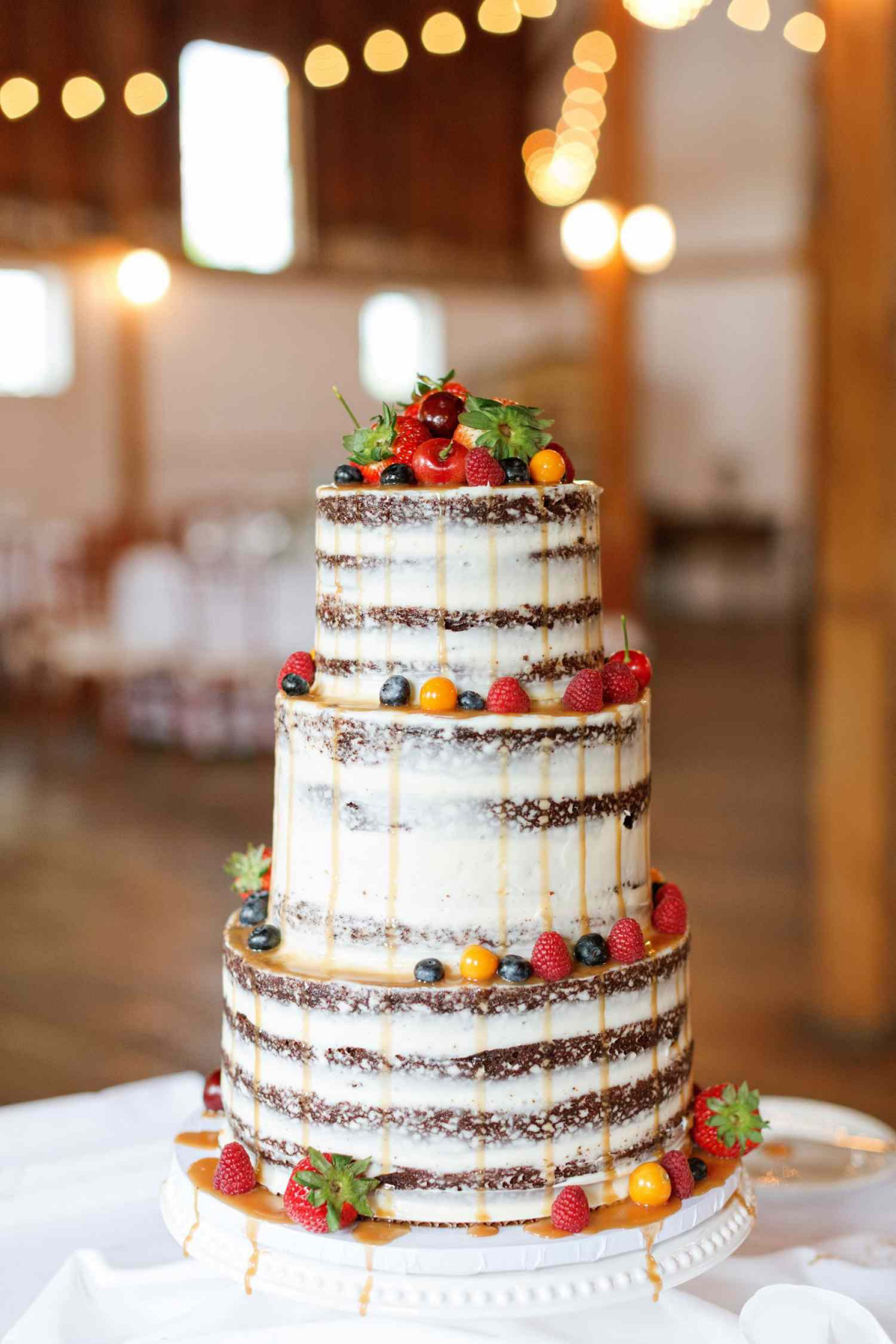
How the Pros Build a Flawless Naked Cake
Making a cake look effortlessly simple takes a ton of technical skill. These are the non-negotiable steps that separate a pro-level cake from a leaning, bulging mess.
1. It Starts with the Right Recipe. You can’t use just any old cake recipe. You need something that’s both moist and sturdy. Light, airy cakes like angel food or chiffon will just collapse. I almost always lean on oil-based recipes, since they stay moist longer. Think dense and delicious options like a carrot or spice cake, a rich chocolate cake made with buttermilk, or a classic vanilla bean cake with a tight, reliable crumb.
2. The Buttercream Dam is Your Best Friend. This is the secret to clean layers. If you want a soft filling like raspberry jam or lemon curd, you can’t just slap it on there. The weight of the cake will squeeze it out the sides. To prevent a mess, we pipe a stiff ring of buttercream around the edge of each cake layer. This ‘dam’ holds the soft filling in place. It’s a simple trick that makes all the difference.
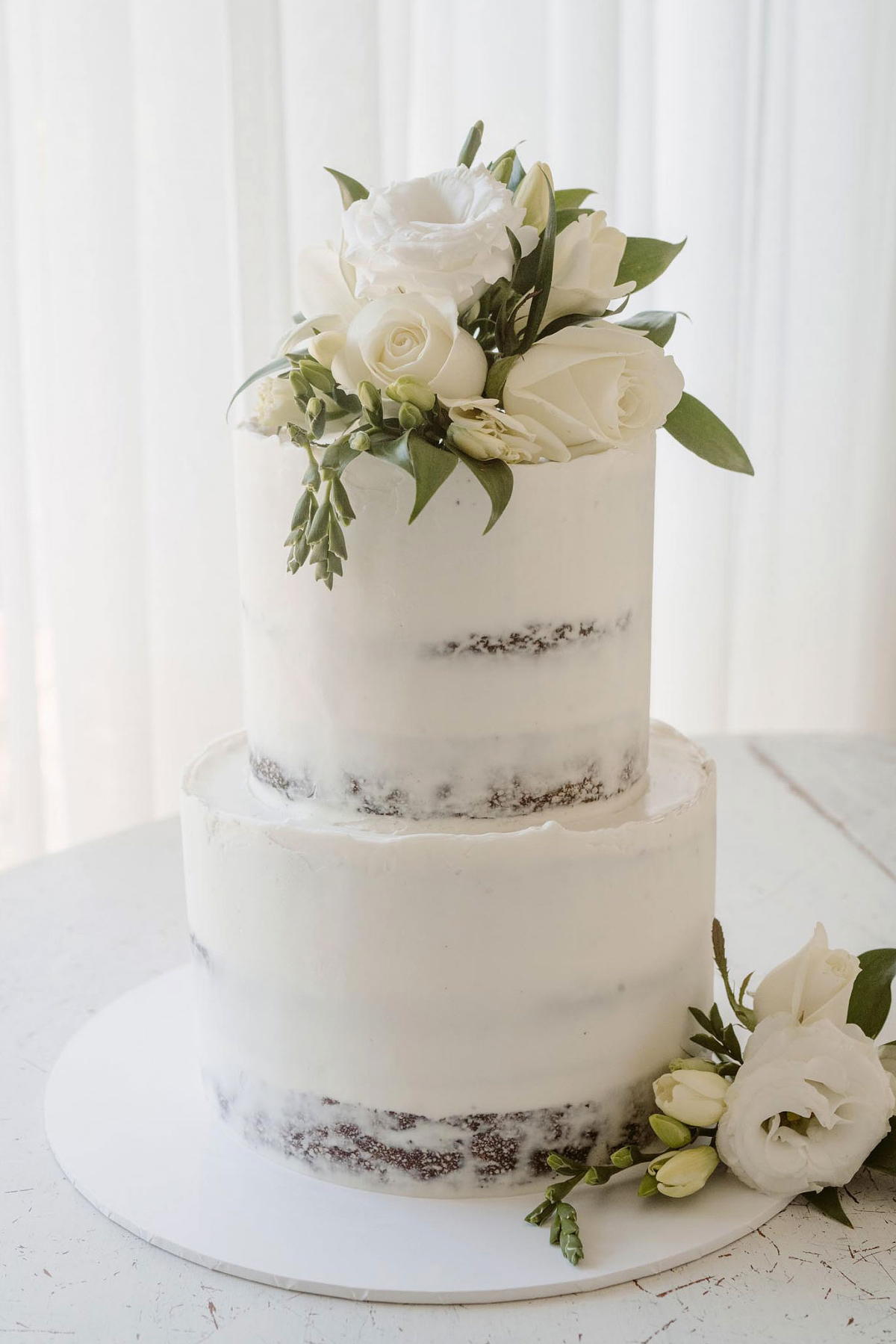
3. Stacking and Doweling Like an Engineer. Any cake with more than one tier needs internal supports, called dowels. This is non-negotiable. For a three-tier cake, we cut several thick plastic or wooden dowels to the exact height of the bottom tier and insert them. They act like pillars. Then, a cardboard cake circle goes on top, followed by the next tier, which gets its own set of dowels. For taller cakes, I always drive a long, sharpened central dowel through every tier, from top to bottom. I learned that lesson the hard way after a cake shifted on a bumpy road to a venue. Never again!
So, Can I Just DIY My Naked Cake?
I get this question a lot, and I totally understand the desire to save money or add a personal touch. But I have to be honest with you: this is one of the riskiest DIY wedding projects you can take on. Professionals transport cakes in chilled, separate boxes and assemble them on-site for a reason. Trying to drive a fully assembled, un-frosted three-tier cake to a venue is a recipe for disaster. The leaning, the bulging, the drying out—all those problems we talked about are ten times more likely to happen without professional experience and equipment.
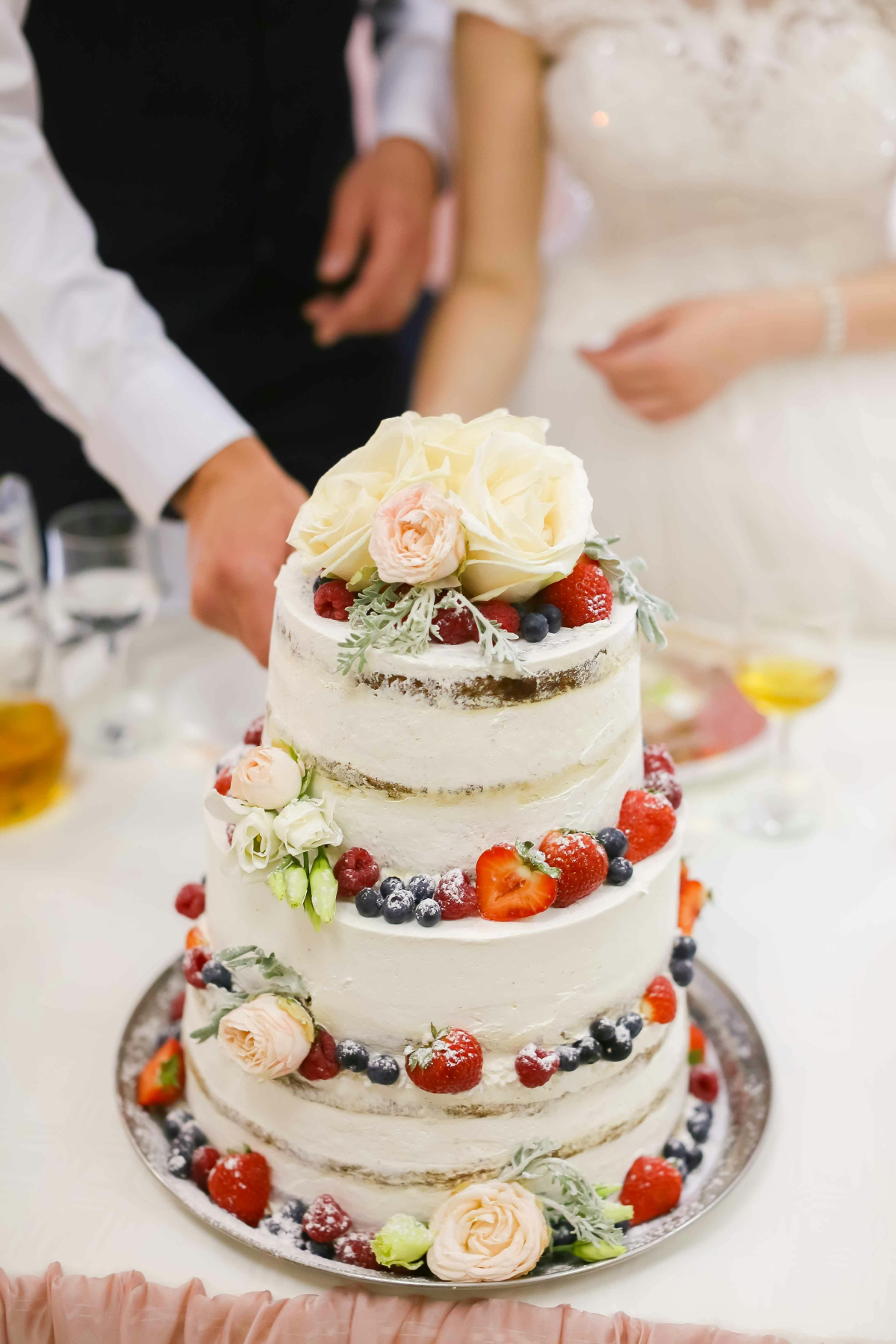
If you’re dead set on it, I’d strongly suggest a small, single-tier semi-naked cake. But for a multi-tiered wedding cake? My advice is to leave it to a pro. The peace of mind is worth every penny.
Let’s Talk Money: The Naked Cake Cost Myth
A lot of people think, “less frosting means less money,” right? It makes sense, but it’s usually not true. While you might save a few dollars on buttercream, you’re paying for a higher level of labor and skill. There’s no frosting to hide imperfections, so the baking and assembly have to be flawless and are often more time-consuming.
Good to know: Be prepared for a price range of about $9 to $16 per slice, which is right in line with a beautifully decorated buttercream cake. You’re paying for the baker’s precision and time, not saving on frosting!
A Crucial Chat About Flowers and Food Safety
Okay, this is the most important part of our conversation. Many popular wedding flowers are toxic. Placing them directly onto your cake is a serious food safety hazard. As a baker, this is my number one concern. The sap from stems can leach into the cake, and pesticides can contaminate the surface.
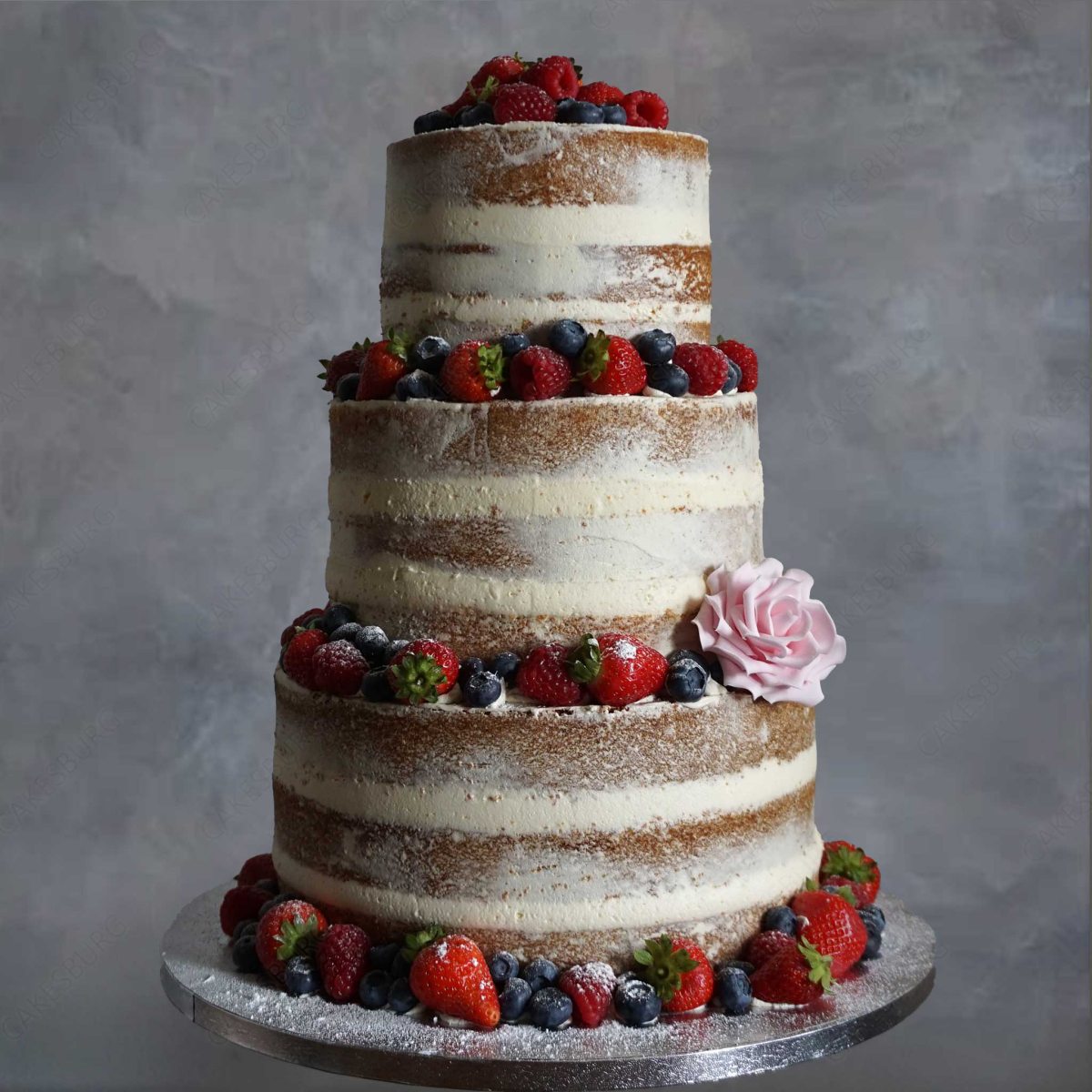
Flowers like hydrangeas, calla lilies, baby’s breath, and even eucalyptus should never touch the cake directly. A professional baker and florist will know exactly how to handle this. Each stem must be wrapped in floral tape and then placed in a small plastic tube called a posy pick, which is then inserted into the cake. This creates a food-safe barrier. You can find posy picks at cake supply stores or online—a pack of 50 is usually under $10. They’re a non-negotiable safety tool. If your baker or florist shrugs off these concerns, that is a HUGE red flag.
Is a Naked Cake Right For Your Wedding?
Before you fall in love, ask yourself if it’s a good fit for your day. An outdoor wedding in July? Very risky. A naked cake needs a cool, protected spot away from direct sunlight.
My rule of thumb: in a hot or humid venue, a naked cake shouldn’t sit out for more than 60-90 minutes. In a climate-controlled indoor room, you might get away with 3-4 hours. Ask your baker for their specific recommendation for your cake and venue!
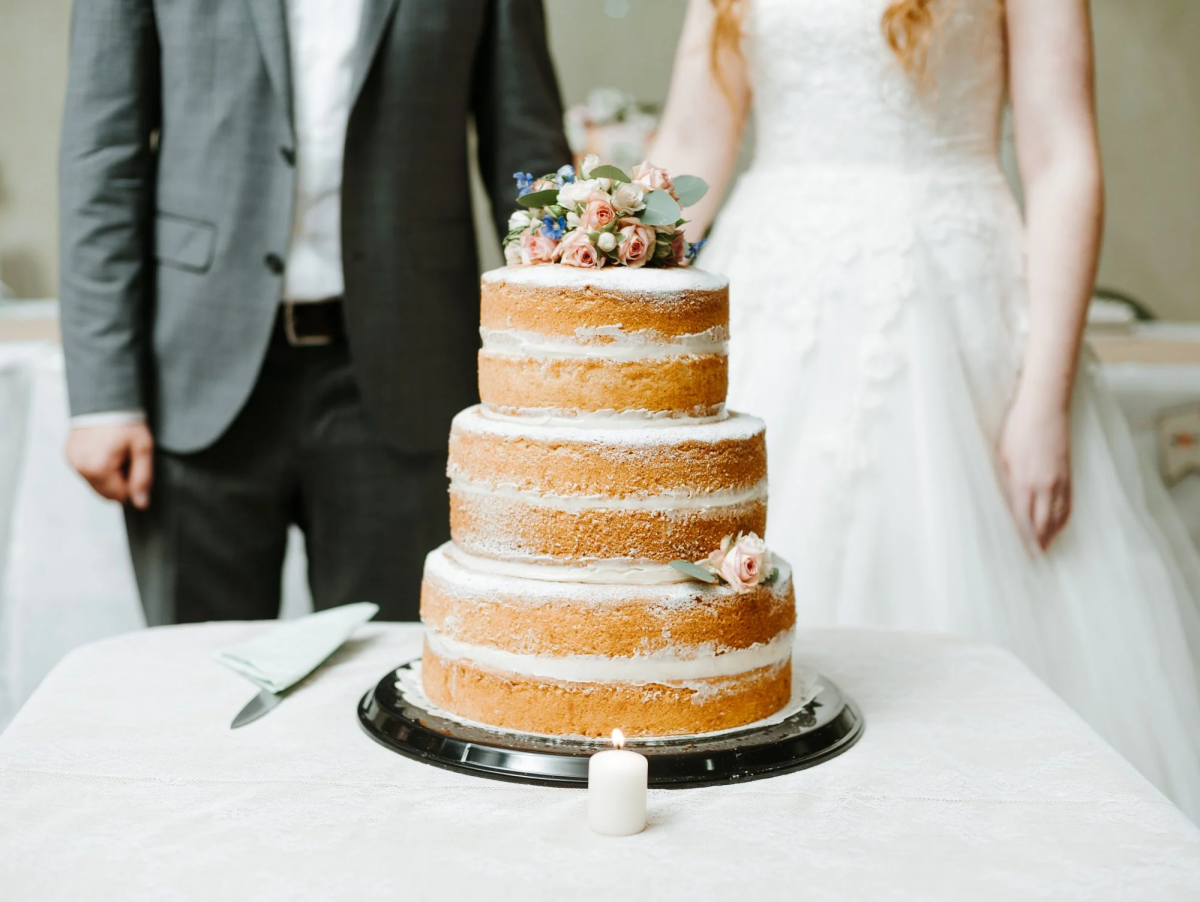
When you start looking for a baker, you’re not just looking for someone who makes tasty cake; you’re hiring a structural artist. Here’s what to ask them:
- “Can I see photos of other naked cakes you’ve made?” (Look for clean lines and no bulging filling.)
- “How do you ensure the cake stays fresh?” (A good answer involves late assembly.)
- “How do you transport tiered naked cakes?” (The right answer: in separate, chilled boxes for on-site assembly.)
- “How do you handle fresh flowers to keep them food-safe?” (Listen for words like “wrapped stems” and “posy picks.”)
Oh, and one last tip! Before you even reach out to a baker, try to have a few things ready. It helps us give you a much more accurate quote.
Before You Call the Baker:
• Know your estimated guest count.
• Have your venue and date confirmed.
• Gather a few inspiration photos of the style you like.
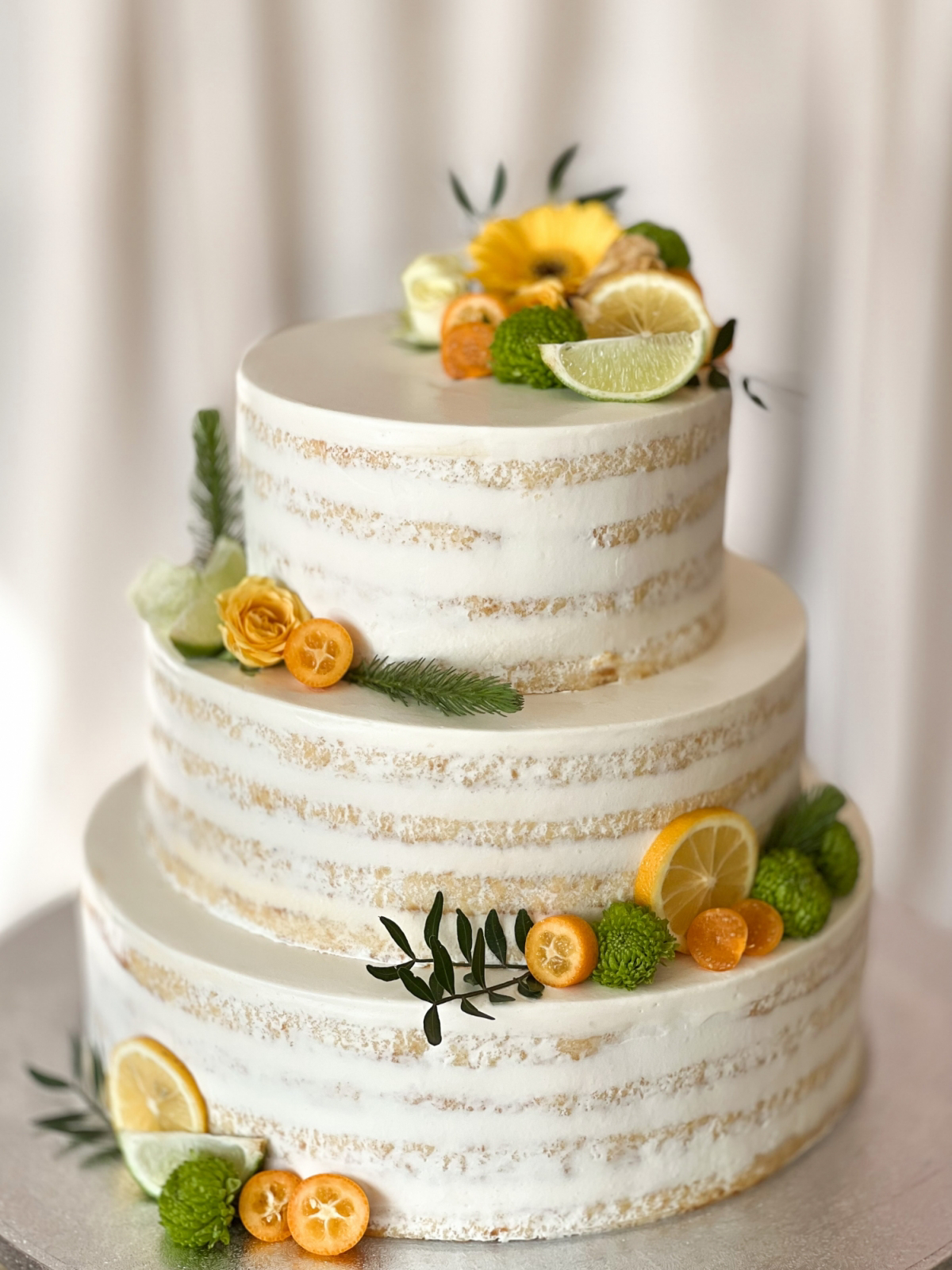
In the end, choosing a naked cake is about celebrating flavor and a natural, honest aesthetic. It’s a beautiful statement piece, but it requires trusting in your baker’s skill. Do your homework, ask the right questions, and be realistic. If you do, you’ll get a cake that tastes every bit as incredible as it looks.
Galerie d’inspiration
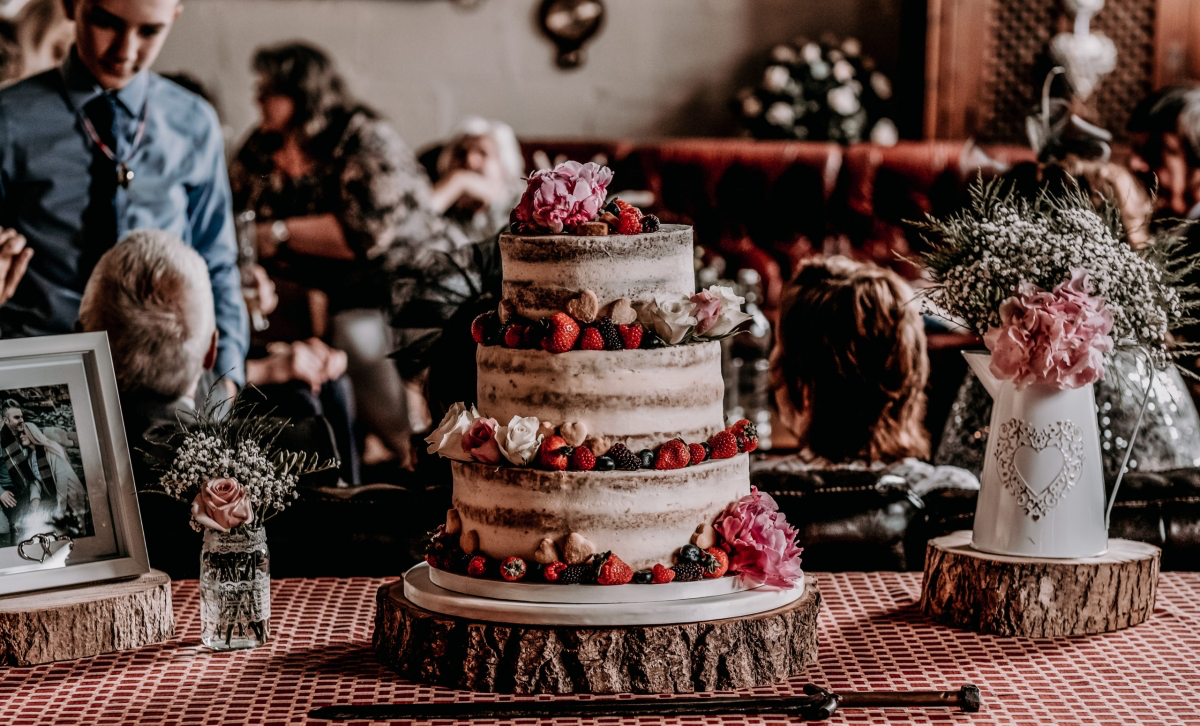
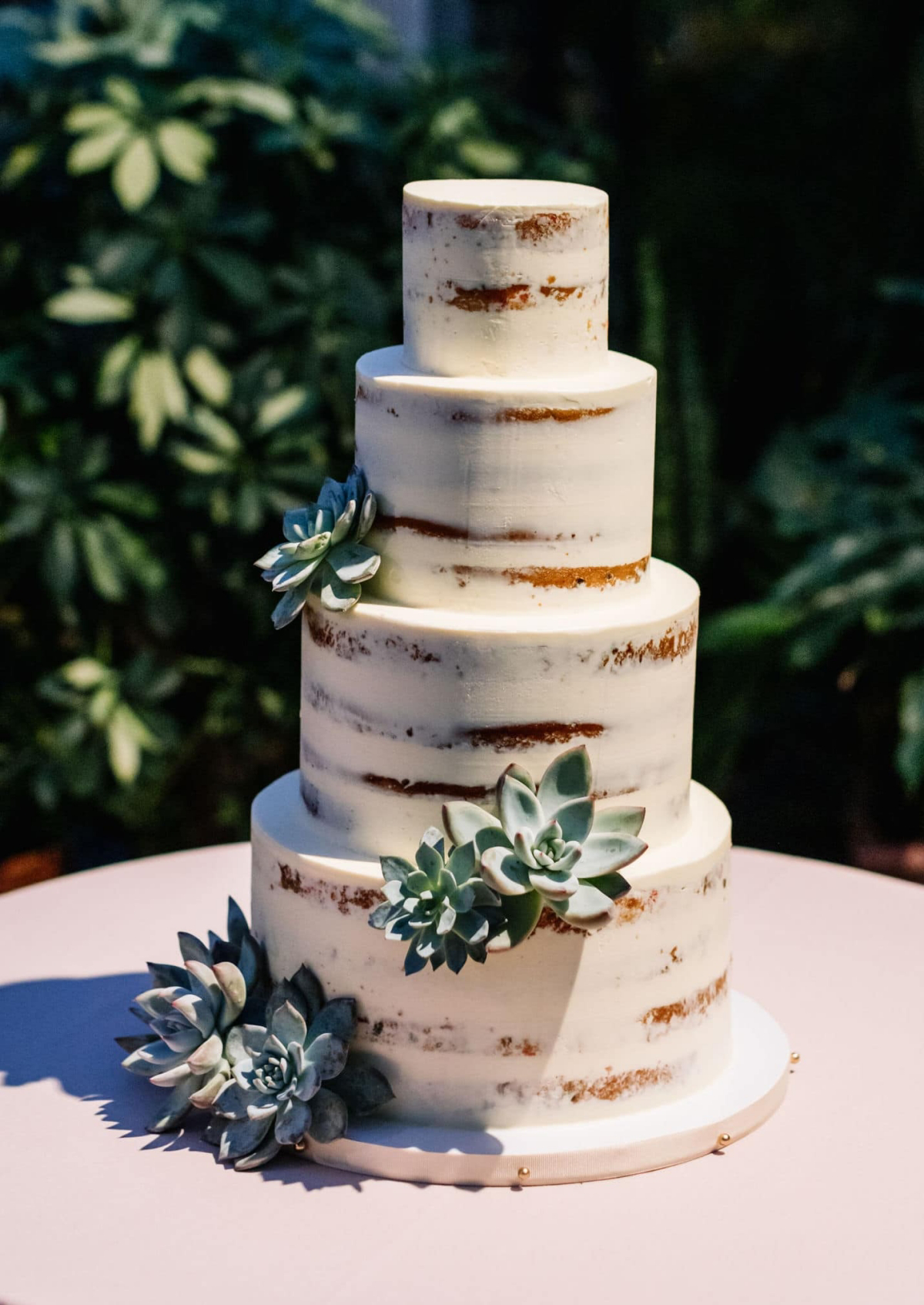
A common misconception: that ‘naked’ means cheaper. The reality is that the flawless finish, perfect layers, and structural precision these cakes demand require immense skill and time. Without frosting to hide imperfections, the labor can sometimes be even more intensive than for a traditionally iced cake, impacting the final cost.

Never use flowers on a cake unless you are certain they are edible and pesticide-free. Many popular wedding flowers, like gypsophila (baby’s breath), hydrangeas, and calla lilies, are toxic if consumed.
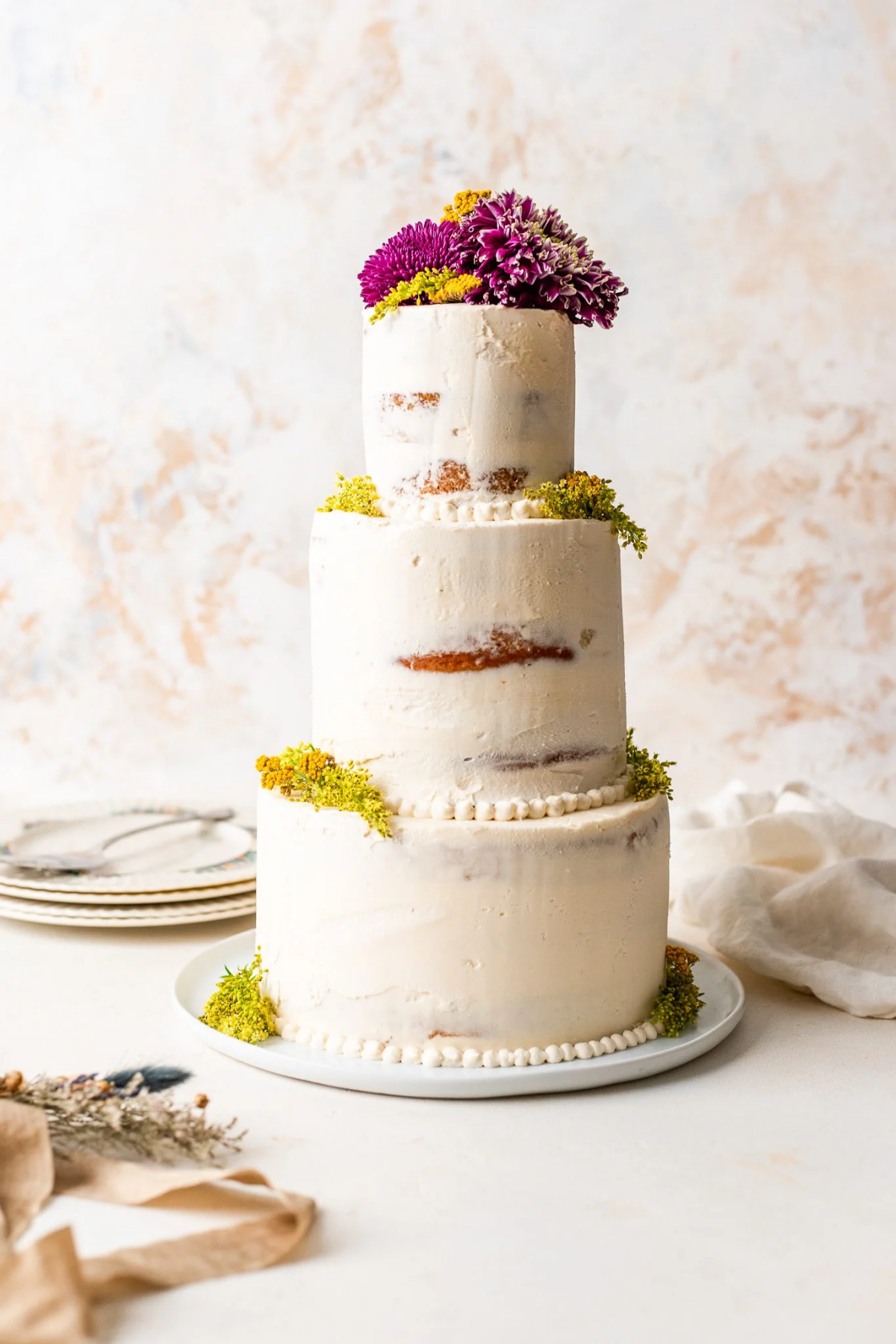
Do some cake flavors work better than others?
Absolutely. A naked cake needs a sturdy foundation. Denser, moist recipes like carrot cake, almond cake, or a rich chocolate mud cake are fantastic choices. They hold their shape better and resist drying out. Lighter, more delicate sponges like angel food cake are generally too fragile to stack without the support of a full frosting coat.

Embrace the season for a cake that feels perfectly in place. An autumn wedding is the ideal backdrop for a naked cake adorned with rich, warm tones.
- Spices & Nuts: A spiced carrot or apple cake decorated with pecans, walnuts, and a dusting of cinnamon.
- Deep Fruits: Fresh figs, black grapes, and sprigs of rosemary offer a sophisticated, Renaissance-painting vibe.
- Caramel Drizzle: A salted caramel drip adds a layer of decadent flavor and autumnal color.
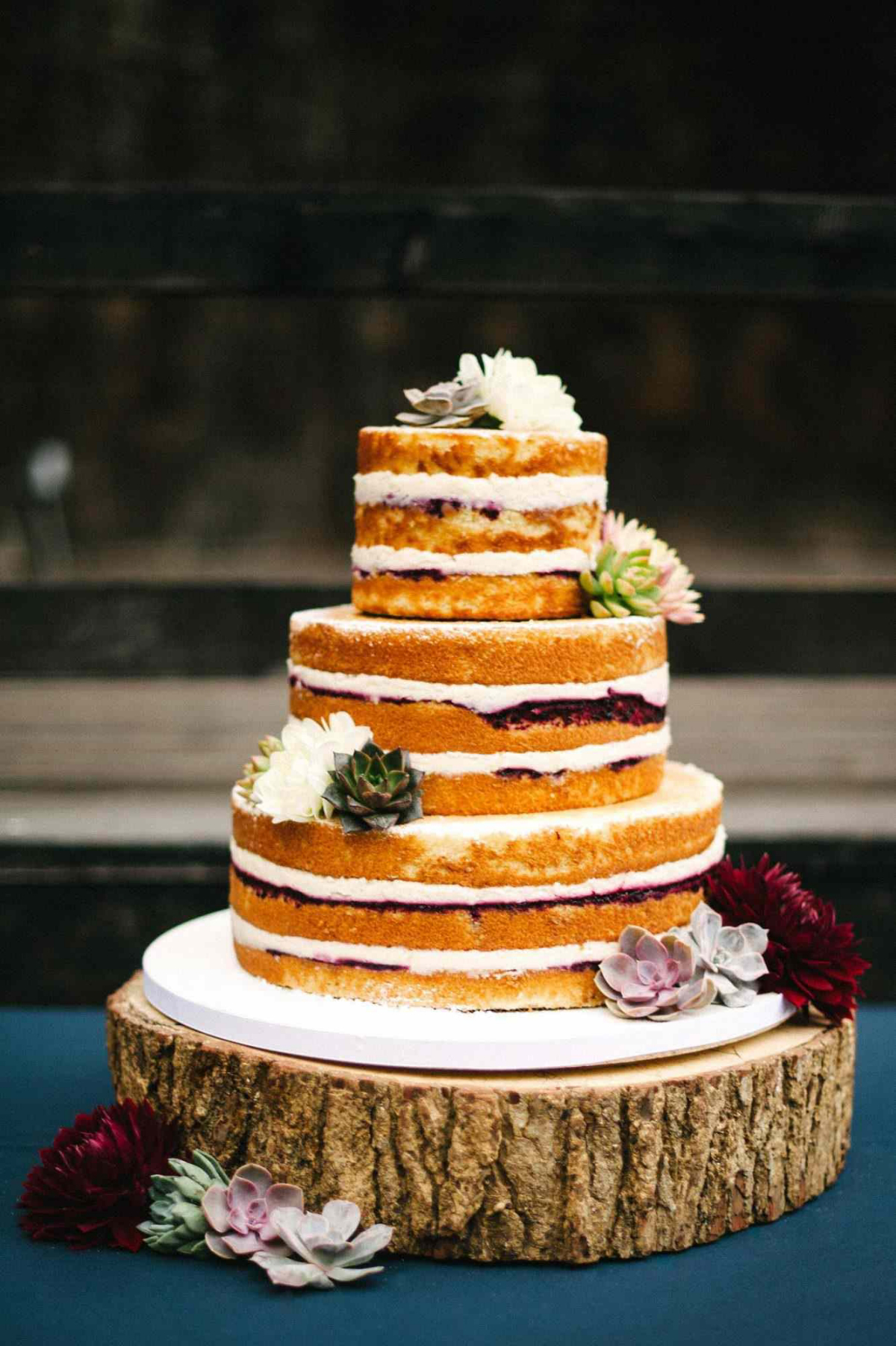
As celebrated pastry chef Christina Tosi of Milk Bar famously noted, she wanted to show the ‘guts of the cake.’ Her iconic exposed-layer cakes helped propel the naked cake from a rustic alternative into a high-fashion culinary statement in the early 2010s.
This shift in perspective celebrated the ingredients and structure, turning what was once hidden into the main attraction. It’s a philosophy of transparency you can taste.
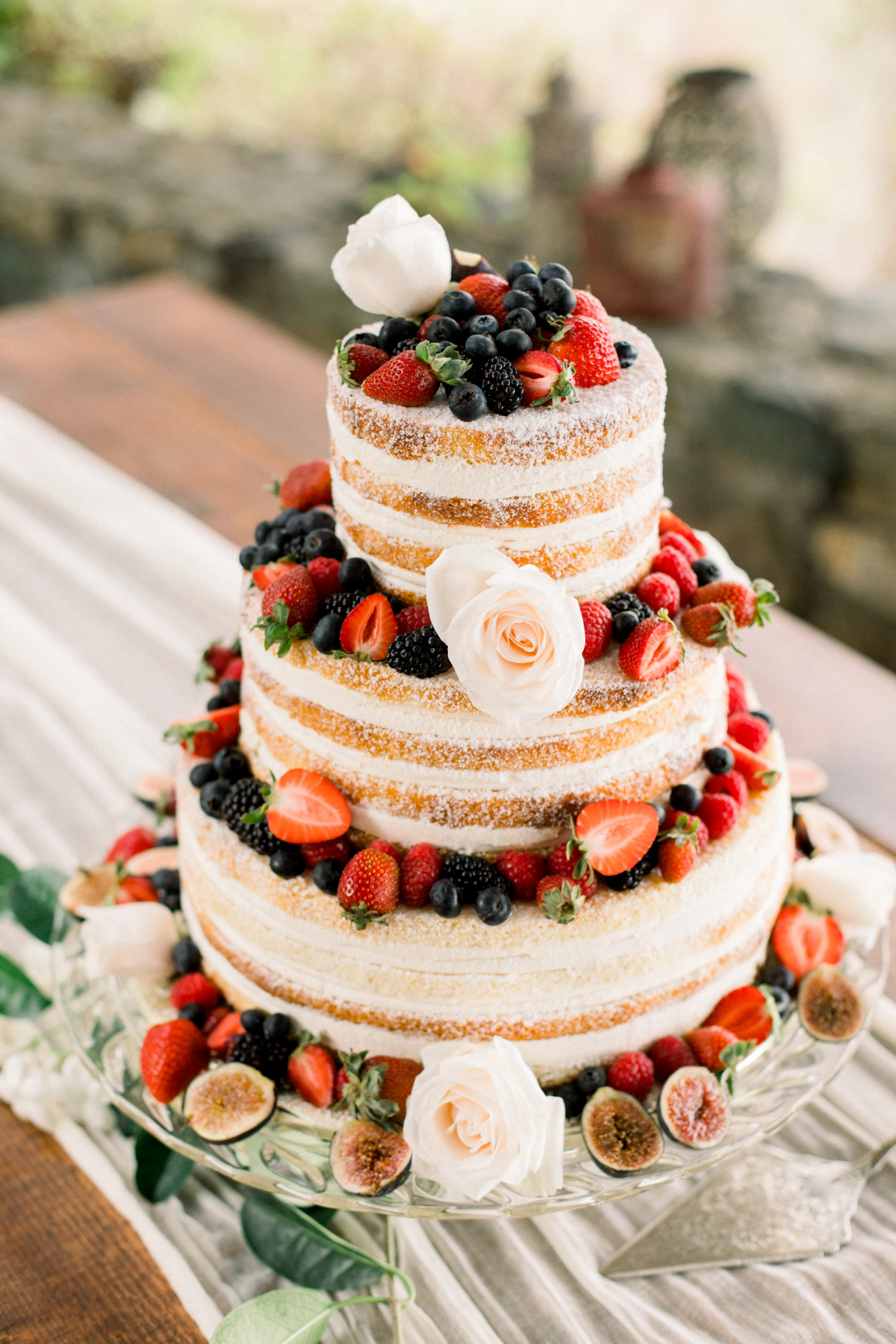
- It adds a dramatic, cascading visual element.
- It reintroduces moisture to the exposed edges of the cake.
- It can be customized in flavor (think white chocolate, salted caramel, or raspberry).
The secret? A perfectly executed drip. Most often made from a chocolate ganache, its consistency must be just right—thick enough not to run all the way down, but fluid enough to create that signature teardrop shape.
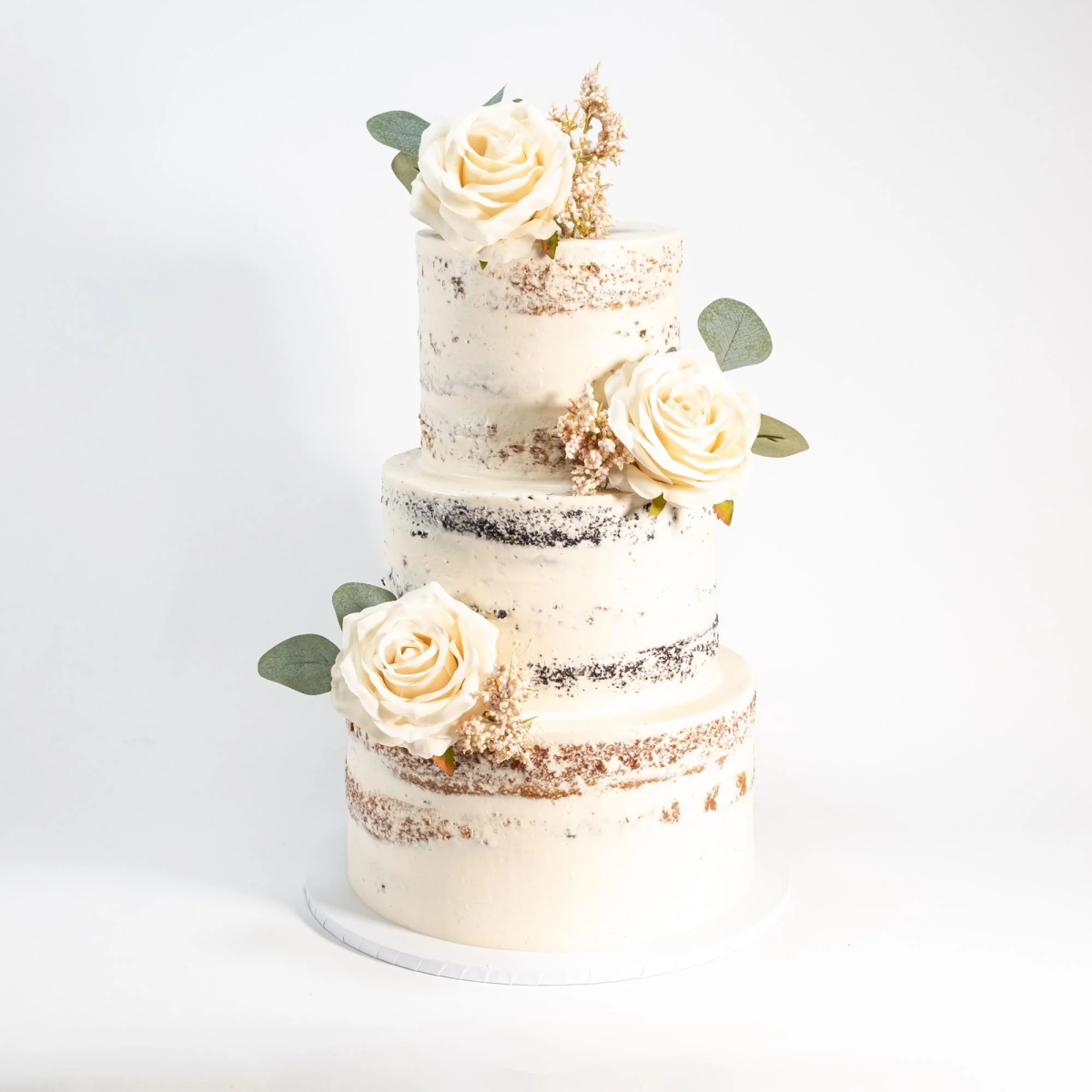
Beyond the visual appeal, a naked cake transforms the atmosphere. Instead of the faint, sugary scent of fondant, the air fills with the genuine aroma of fresh-baked cake, rich buttercream, and ripe berries or fresh flowers. It’s an authentic, welcoming scent that promises a truly delicious experience, drawing guests in before the first slice is even cut.
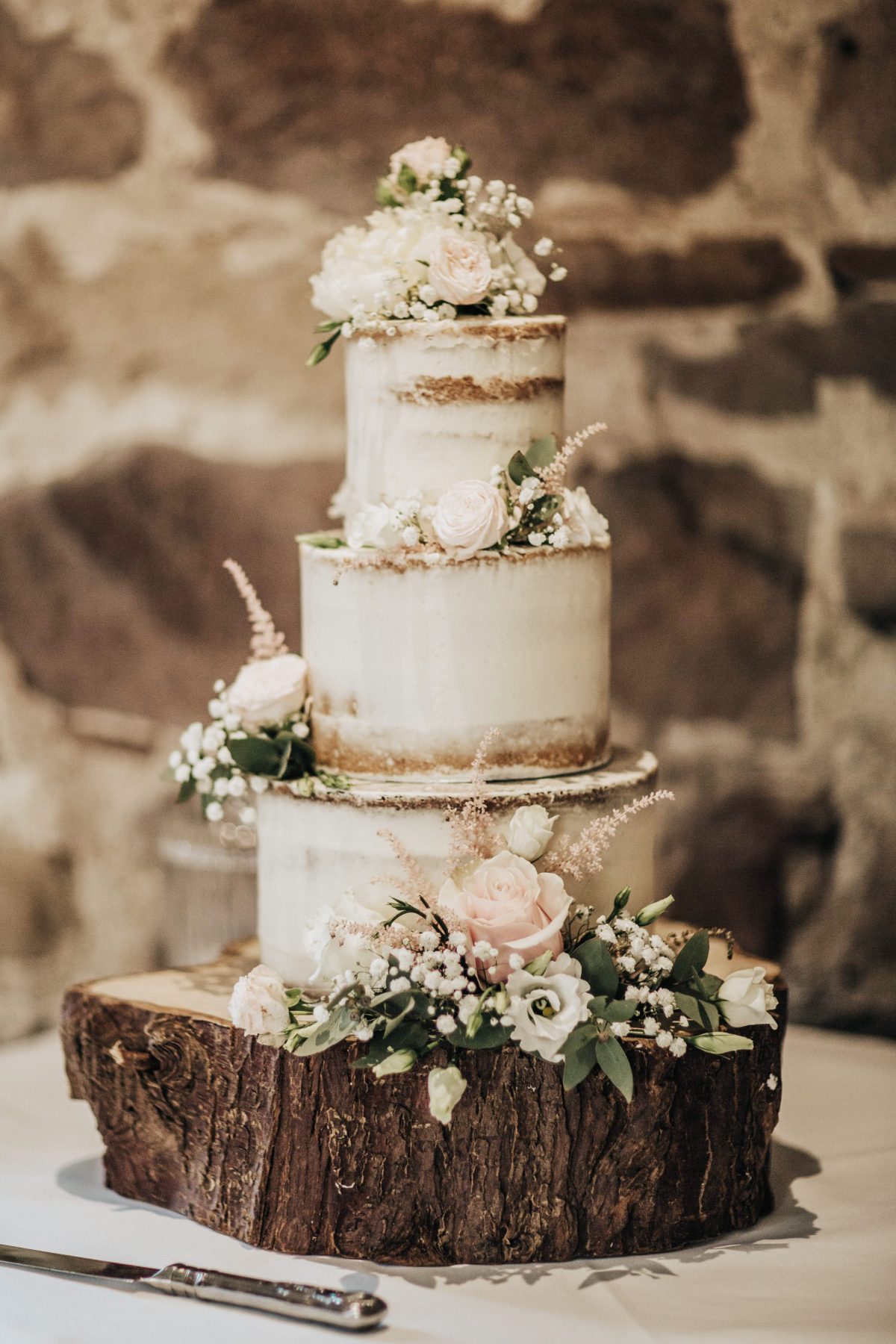
Fresh Fruit: A vibrant, natural choice that adds flavor and moisture. Think summer berries, sliced figs in autumn, or candied citrus in winter. Be aware they can sometimes ‘weep’ juice onto the cake layers.
Fresh Flowers: Purely aesthetic, offering endless color and style possibilities from brands like FiftyFlowers or your local florist. They must be confirmed food-safe and are more susceptible to wilting in heat.
Often, the choice comes down to your wedding’s overall theme: rustic and edible, or romantic and floral?
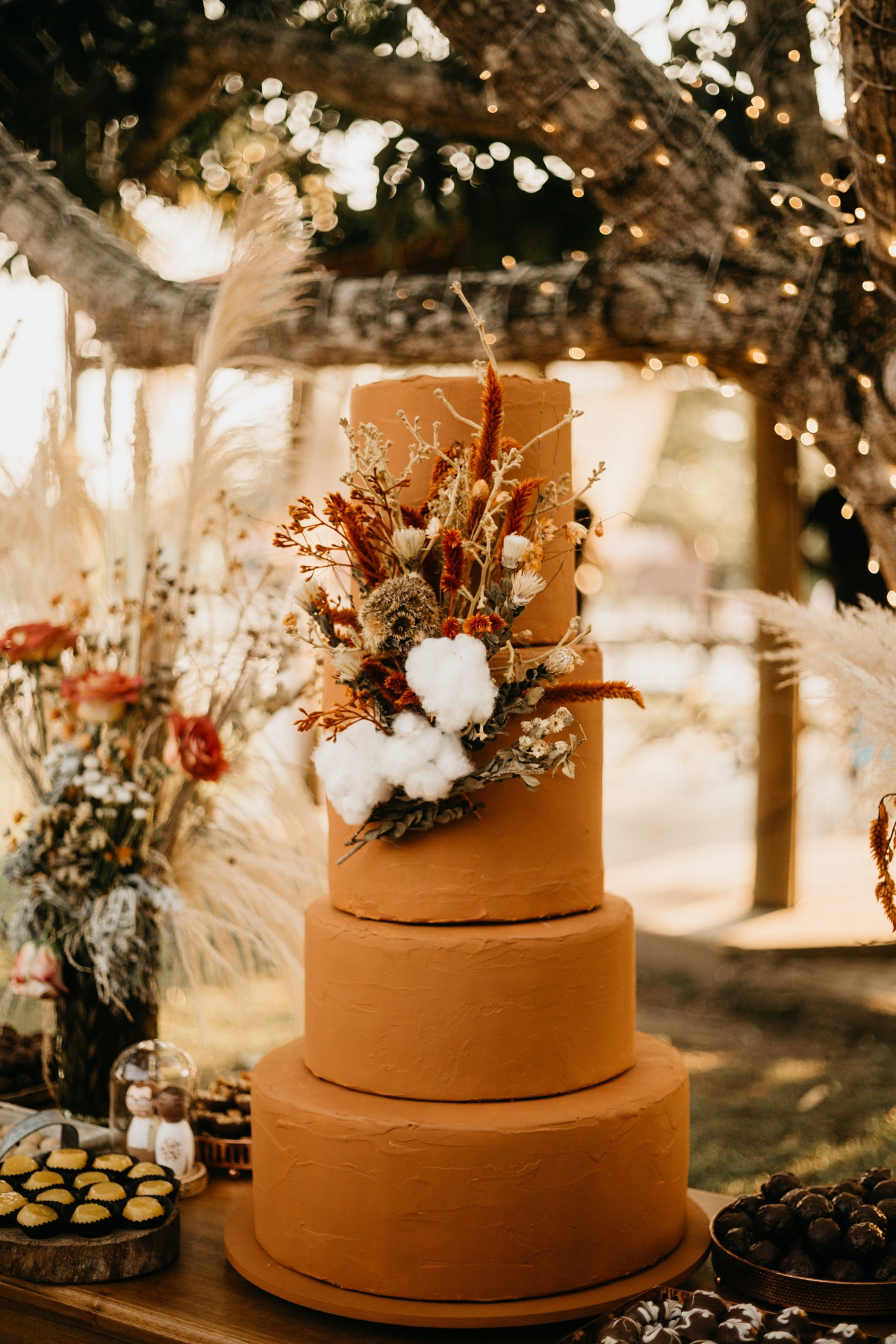
Worried about getting your multi-tiered masterpiece to the venue? Don’t be. Most experienced bakers will never transport a tall naked cake fully assembled. The tiers travel separately in cooled, stable boxes and are stacked and decorated on-site. This minimizes risk and ensures every layer is perfectly aligned for its grand debut.
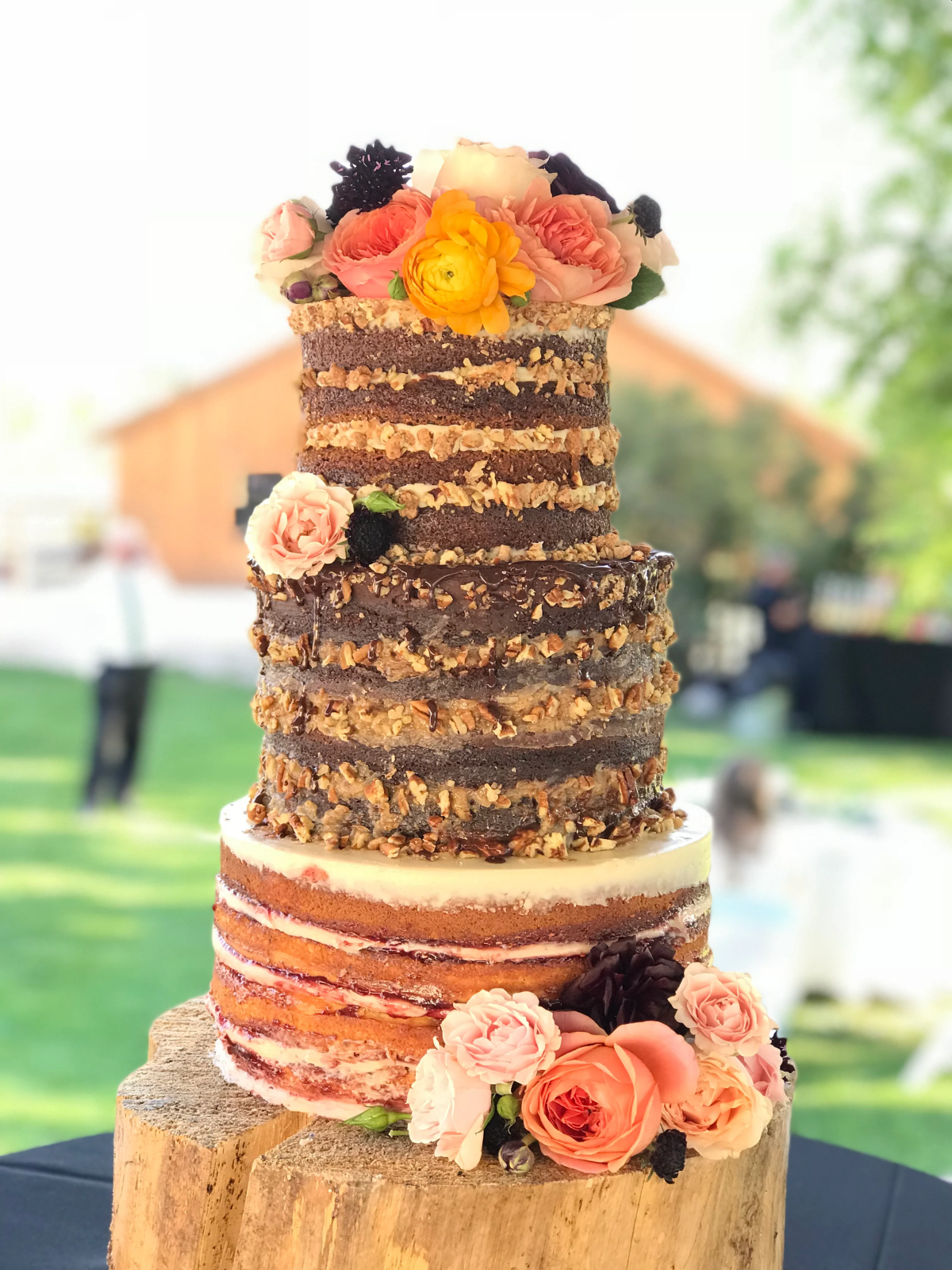
Before you commit, ask your baker these key questions:
- Can I see a portfolio of your previous naked and semi-naked cakes?
- How do you ensure the cake stays moist until serving time?
- What is your plan for delivery and on-site assembly, especially in case of warm weather?
- How do you work with florists to ensure floral decorations are safe?
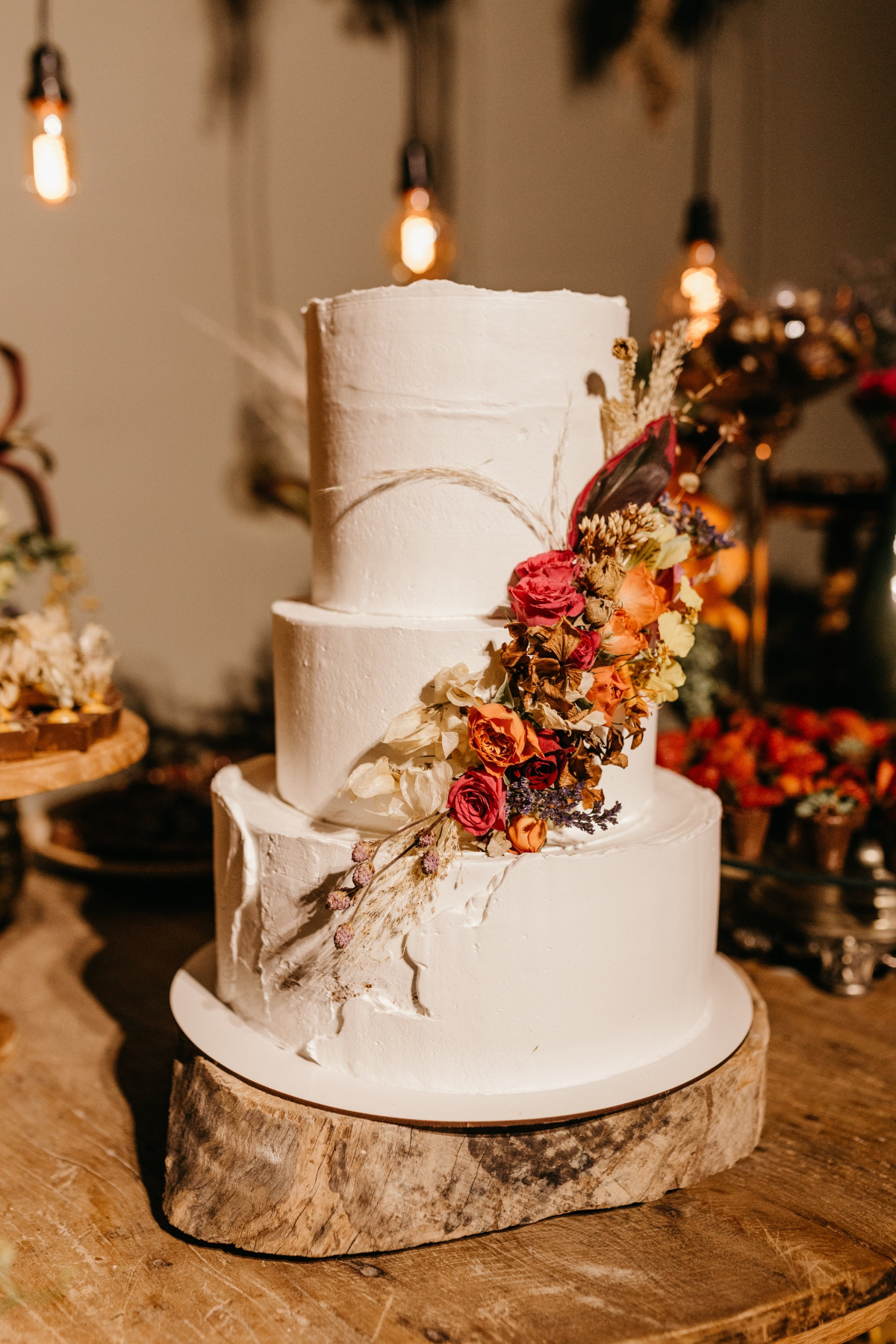
An unfrosted slice of cake can lose over 10% of its moisture within a few hours when exposed to air.
This is why your baker’s timing is an art form. The cake is often assembled on-site as late as possible, especially for outdoor or non-air-conditioned venues. It’s a delicate dance against the clock to ensure your cake is perfect at the moment of cutting.
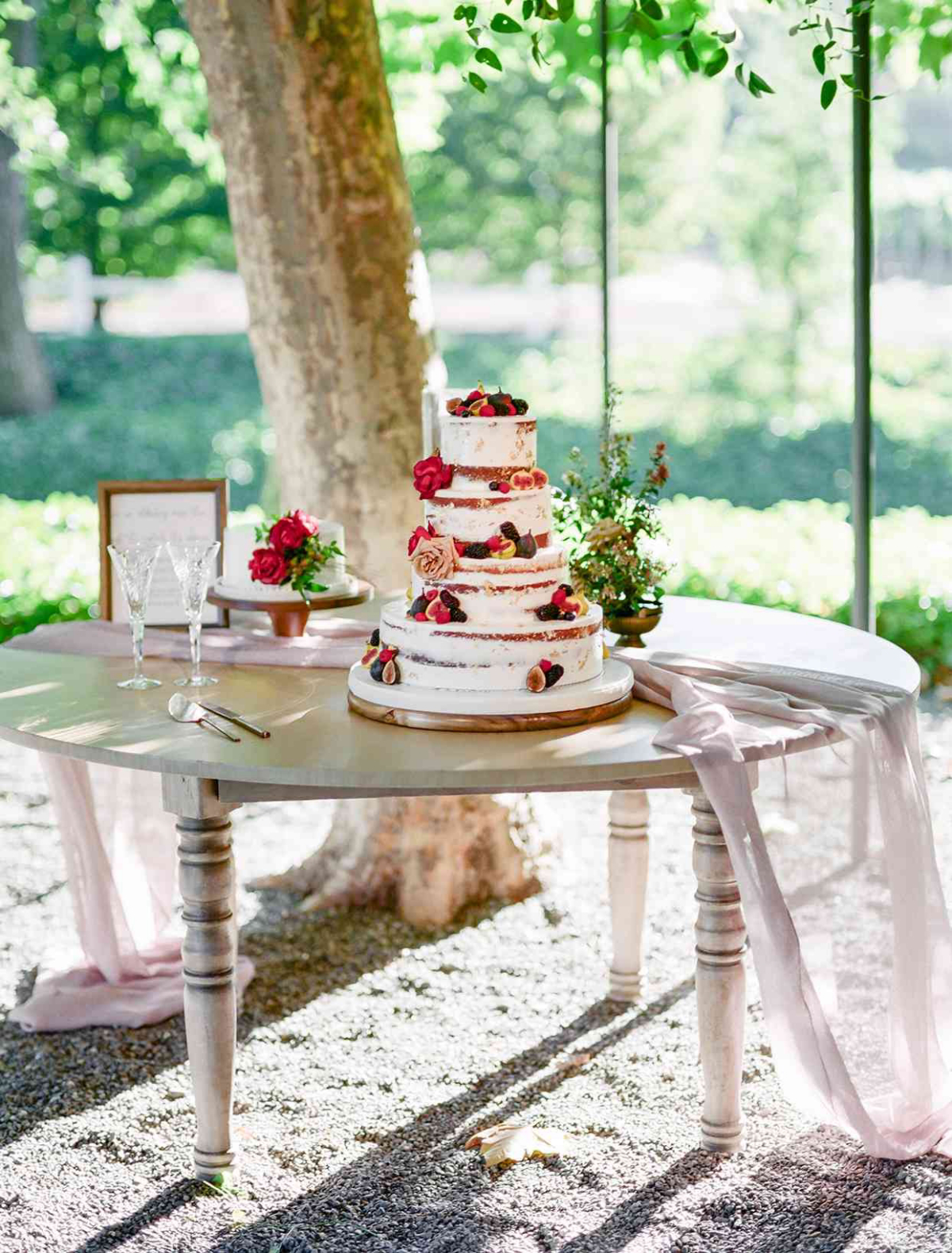
Can we save the top tier for our first anniversary?
It’s a lovely tradition, but a naked cake is a challenge. Unlike a fondant-sealed cake, it can’t be frozen as-is without severe freezer burn. Your best bet is to have your caterer tightly wrap the top tier in multiple layers of plastic wrap, followed by foil, and place it in a proper cake box immediately. Even so, a better idea may be to order a small, fresh replica from your baker on your anniversary!
The ‘semi-naked’ style is not just a compromise; it’s a distinct aesthetic. That ultra-thin ‘scrape’ of buttercream, expertly applied by bakers like those at Whipped Bakeshop, does more than just hint at frosting. It provides a crucial, light barrier against moisture loss, giving you a bit more flexibility on timing and making the cake slightly more stable for transport, all while maintaining that coveted rustic charm.


